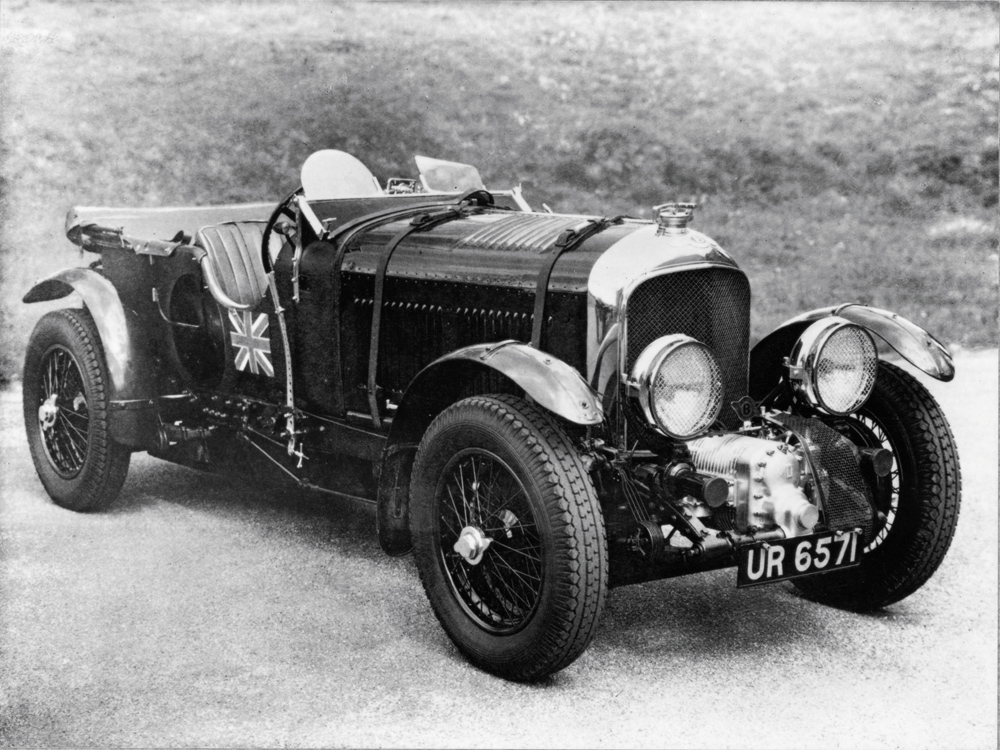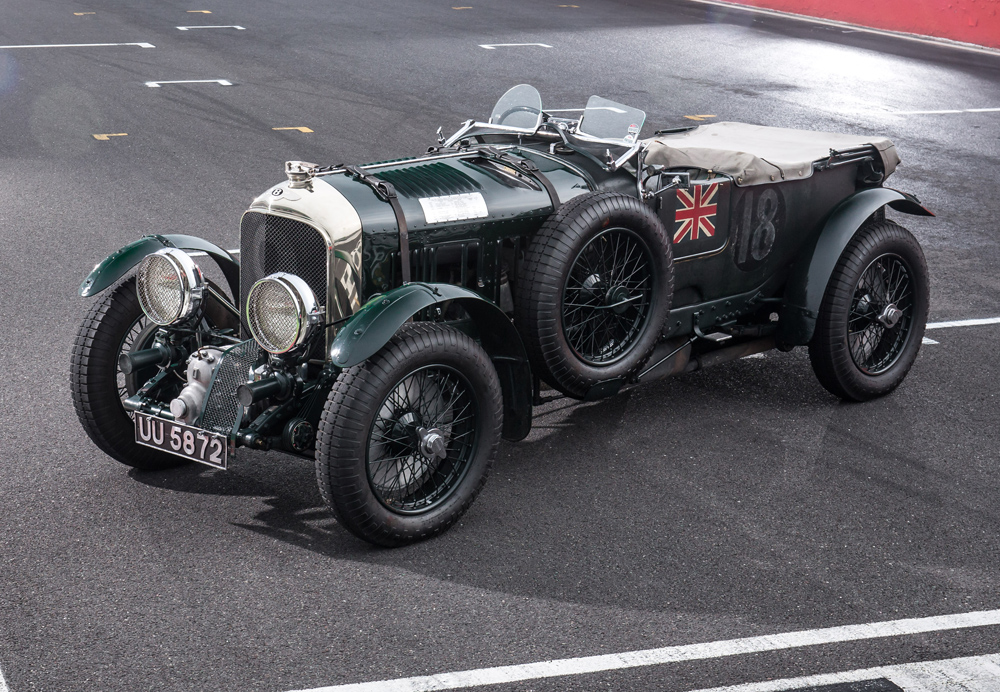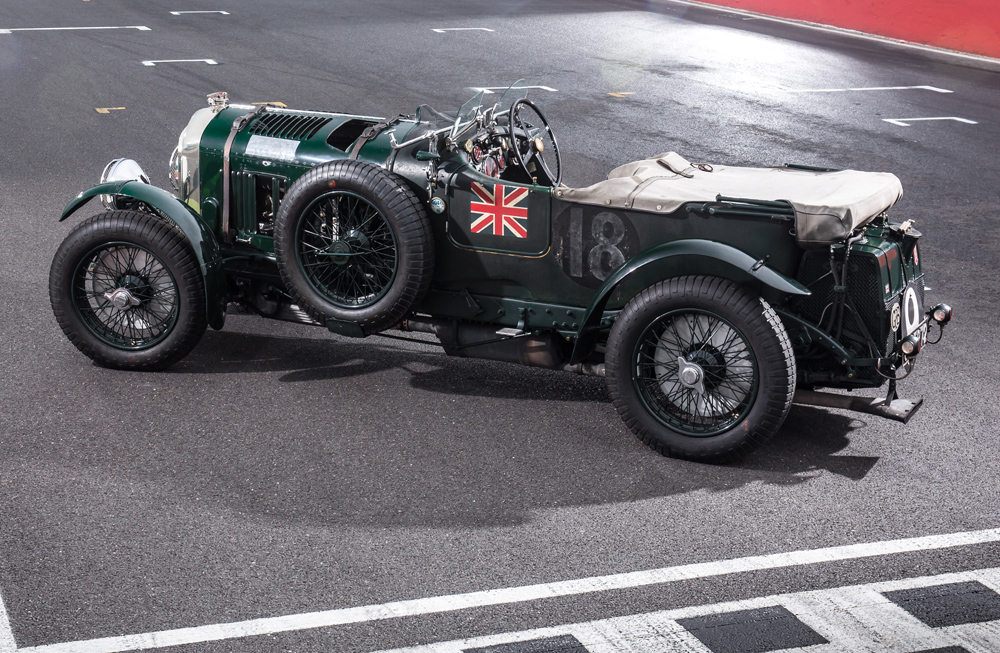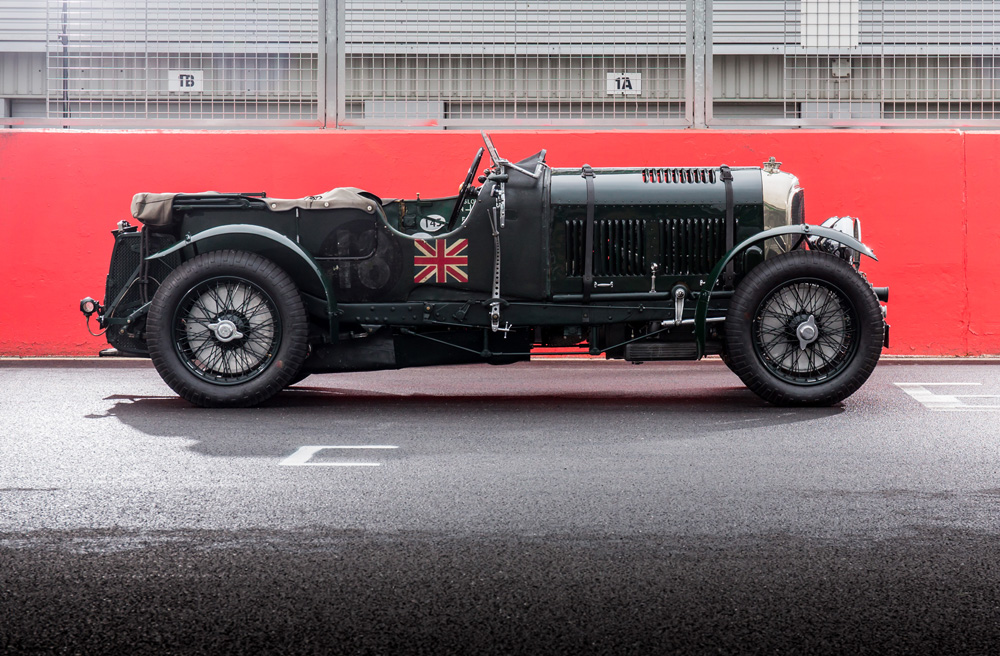|

1929 BENTLEY 4½ LITRE BIRKIN BLOWER
W.O. Bentley was not a fan of the idea of supercharging. When the notion was first suggested to him he said: "It would pervert the design and
corrupt its (the 4½ Litre's) performance." He was worried about reliability since supercharging or 'blowing' the engine doubled the car's power.
Supercharger engineer, Amherst Villiers, had been associated with Raymond Mays' Vauxhall Villiers Supercharge – a sprint car based on the 1922 TT
Vauxhall. The Bentley directors had previously commissioned him to design a Bentley (of which W.O. disapproved).
Bentley Boy Sir Henry 'Tim' Birkin persuaded Bentley's Chairman, Captain Woolf Barnato to let him enter a team at Le Mans in 1930, obliging the
company to make 50 for sale. Work was done at Birkin's workshops at Welwyn Garden City which belonging to racehorse owner, Dorothy Paget. By
1929 sales of the regular 4½ Litre were declining, so there was some logic in extending the life of the 4-cylinder by adding a Roots-type supercharger driven off the crankshaft between the front dumb-irons.
It meant major engine modifications including a heavier crankcase and cylinder block, stronger connecting rods, special pistons and in the racing
versions a counterbalanced crankshaft. But as WO said ruefully, "… the supercharged 4½ never won a race, suffered a never-ending series of mechanical failures and brought the marque Bentley into disrepute".
While the supercharged Blower didn't ever win at Le Mans, with Tim Birkin at the wheel its heroic performance embodies the true spirit of the vintage
racing era. In the 1930 race, Birkin and his Blower diced for the lead with Mercedes ace, Rudi Carracciola, passing him flat out down the Hunaudières
straight with his nearside wheels on the grass. But neither Birkin's Blower nor the Mercedes could maintain the pace, and the race was won by Barnato and Kidston in their Bentley Speed Six.
Supercharged Bentleys were turned into spectacular single seaters and astonishingly Birkin came second in the 1930 French Grand Prix with one
(pictured). At over two tonnes, even when stripped of headlights and mudguards, Birkin's car was probably the heaviest ever to compete in a grand prix.
Dates Produced; 1929-1931
Number Built; 55
Price New; £1,475-£1,520
Body; Saloon or tourer; chassis weight 3,190 lbs (1,447 kg)
Engine; 4.5 Litre, 4 cyl, 4 valves, hollow overhead camshaft gear-driven from front
Power; 175 bhp (130.5 kW) @ 3,500 rpm
Transmission; 4-speed; D-type gearbox
Chassis; 40 tonne pressed steel frame, front cross member and tie bar, strut and rod braced. Suspension: half elliptic leaf spring suspension. Brakes: Bentley-Perrot mechanical brakes, 15.75 in (40 cm) drums
Dimensions;Wheelbase: 130 in (330.2 cm); track 56 in (142.2 cm); length 184.5 in (488.6 cm)
Performance;Top speed 97.8 mph (157.4 kph)
Fuel consumption; 11mpg (25.7L/100 km)





|